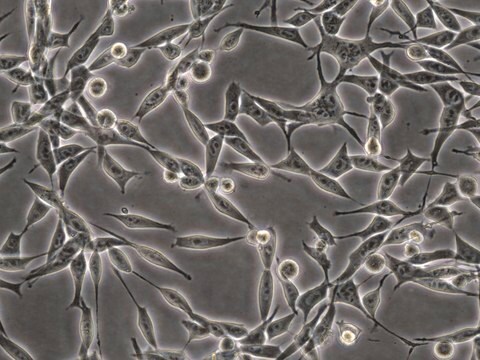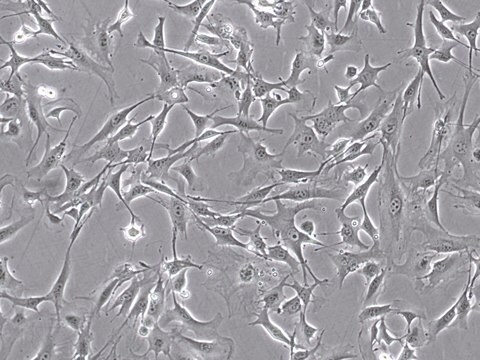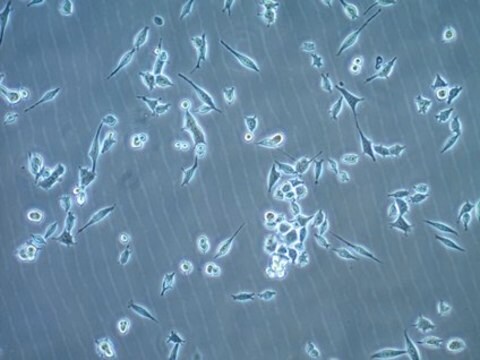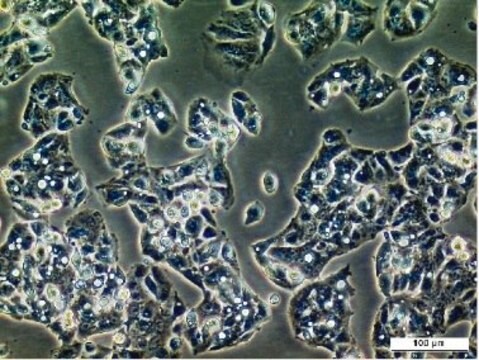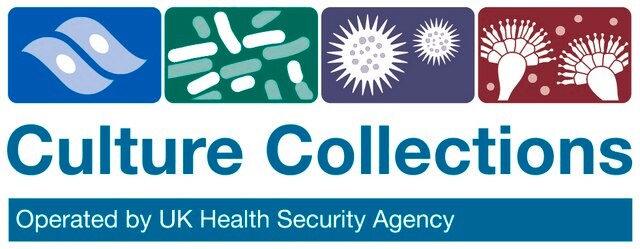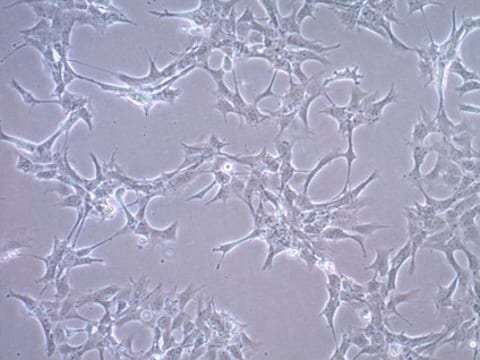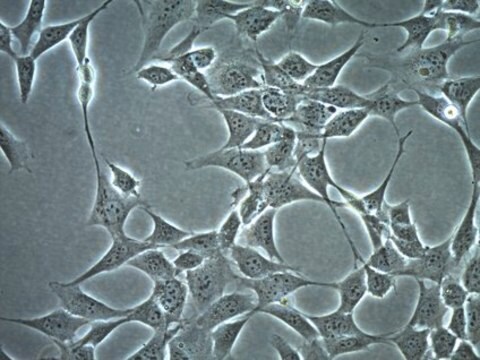SCC240
YUMM5.2 Mouse Melanoma Cell Line
Synonym(s):
Yale University Mouse Melanoma 2.1 cell line, Yale University Mouse Melanoma cell line
Sign Into View Organizational & Contract Pricing
All Photos(5)
About This Item
UNSPSC Code:
41106514
Recommended Products
biological source
mouse
Quality Level
packaging
vial of ≥1X10⁶ cells/vial vials
manufacturer/tradename
Millipore
technique(s)
cell culture | mammalian: suitable
shipped in
liquid nitrogen
storage temp.
−196°C
General description
The YUMM5.2 mouse melanoma cell line was derived from a 4-hydroxytamoxifen-induced melanoma tumor in a female C57BL/6 mouse into which mutations from the Braf/Pten genetically-engineered mouse model had been introduced via backcrossing. The YUMM5.2 cell line harbors the Braf V600E mutation and is homozygous negative for Cdkn2.1?
Application
- Each vial contains > 1X106 viable cells.
- Cells are tested negative for infectious diseases by a Mouse Essential CLEAR panel by Charles River Animal Diagnostic Services.
- Cells are verified to be of mouse origin and negative for inter-species contamination from rat, chinese hamster, Golden Syrian hamster, human and non-human primate (NHP) as assessed by a Contamination CLEAR panel by Charles River Animal Diagnostic Services.
- Cells are negative for mycoplasma contamination.
Features and Benefits
The YUMM cell lines recapitulate genetic drivers found in many human melanomas. YUMM5.2 cells are syngenic with C57BL/6 and retain markers of the Braf/Pten mouse model.
Target description
The promise of immune-based therapies for cancer diagnoses and increasingly successful application of these approaches have emphasized the need for immunocompetent models for examination of immunological responses to cancer cells. Immunocompetent genetically-engineered mouse models with distinct genetic drivers of melanoma are essential for identifying potential immunotherapies, but are limited by the need to maintain colonies of multiple genotypes necessary to generate mouse models with appropriate genetic backgrounds.YUMM5.2 cells are syngenic with the immunocompetent C57BL/6 mouse background and maintain genetic markers of the Braf/Pten mouse model. Approximately half of all melanomas contain Braf mutations, of which the V600E mutation comprises 90% of cases, while the tumor suppressor p53 is inactivated in 90% of melanomas. The YUMM5.2 cell line harbors the activating Braf V600E mutation and is negative for p53. The YUMM5.2 mouse melanoma cell line represents a valuable tool for investigating tumor biology and developing therapeutic approaches for melanomas with this highly prevalent mutational profile. Mutation: BrafV600E/wt p53−/−References:1. Meeth K et al. (2016) The YUMM lines: a series of congenic mouse melanoma cell lines with defined genetic alterations. Pigment Cell Melanoma Res 29(5): 590-597.2. Dankort D et al. (2009) Braf(V600E) cooperates with Pten loss to induce metastatic melanoma. Nat Genet. 41(5): 544-552.
Storage and Stability
Store in liquid nitrogen. The cells can be cultured for at least 10 passages after initial thawing without significantly affecting the cell marker expression and functionality.
Disclaimer
Unless otherwise stated in our catalog or other company documentation accompanying the product(s), our products are intended for research use only and are not to be used for any other purpose, which includes but is not limited to, unauthorized commercial uses, in vitro diagnostic uses, ex vivo or in vivo therapeutic uses or any type of consumption or application to humans or animals.
Storage Class
10 - Combustible liquids
wgk_germany
WGK 3
flash_point_f
Not applicable
flash_point_c
Not applicable
Certificates of Analysis (COA)
Search for Certificates of Analysis (COA) by entering the products Lot/Batch Number. Lot and Batch Numbers can be found on a product’s label following the words ‘Lot’ or ‘Batch’.
Already Own This Product?
Find documentation for the products that you have recently purchased in the Document Library.
Our team of scientists has experience in all areas of research including Life Science, Material Science, Chemical Synthesis, Chromatography, Analytical and many others.
Contact Technical Service
